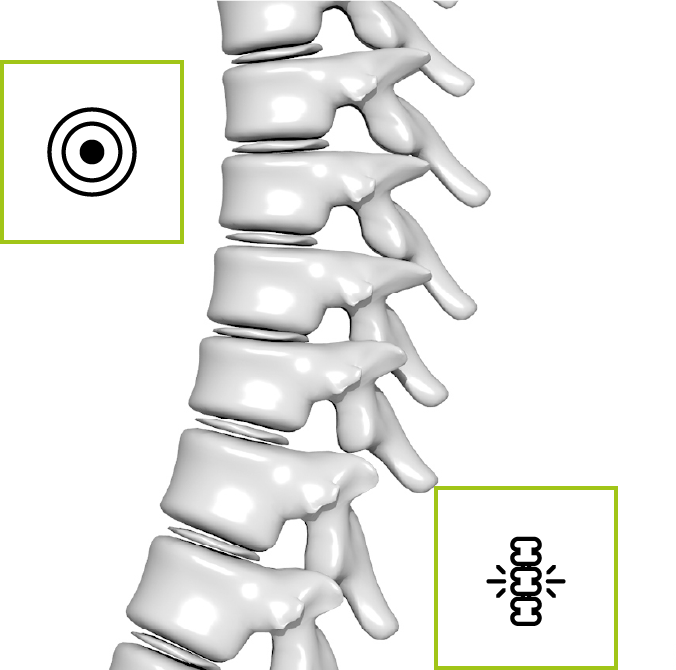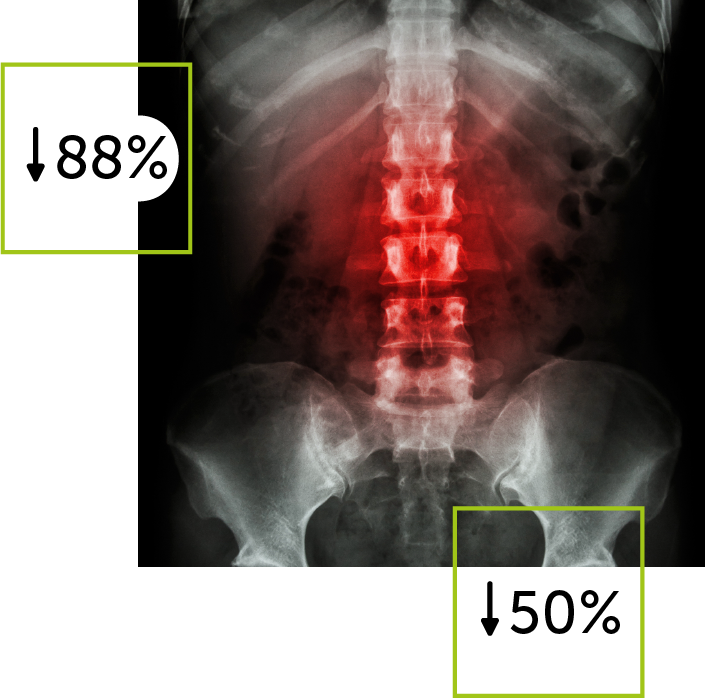Vibrotherapy – the way to go for back and spine pain
Vibrotherapy is a scientifically proven method for managing back and spine pain, including chronic pain.
How does it work?
Lack of physical activity or poor posture can lead to overload changes in the neck and neck area, followed by degeneration, injury, inflammatory changes and diseases that manifest as pain.
Vibration stimulates both superficial and deeply localized pain receptors, raising the pain threshold in the long term, resulting in less pain.
Vibrotherapy also does a great job of reducing the inflammatory response and promotes muscle strengthening.


When and for whom?
Vibrotherapy of the neck, nape and shoulder girdle is recommended for problems with blood flow in the carotid arteries, restrictions in the mobility of these areas, painful conditions in the neck and nape, dizziness and balance disorders, tension headaches, and chronic stress conditions.
The method also relieves overload neck and neck pain, often occurring in people who do repetitive work in a sitting position, such as at a computer.
Effectiveness
Just one vibrotherapy treatment for frozen shoulder syndrome resulted in a 30% reduction in pain and increased shoulder range of motion.

Beinert K, Preiss S, Huber M, Taube W. Cervical joint position sense in neck pain. Immediate effects of muscle vibration versus mental training interventions: a RCT. Eur J Phys Rehabil Med 2015 December;51(6):825-32
Benefits of vibrotherapy

No side effects

Action confirmed by scientists and practitioners

Perceptible effects from 1 treatment

Long-lasting effects through systematic use
Choose the right product
We will help you select a set of modules that suits your conditions.
Back pain – the most common cause
A particularly severe problem for a large part of the adult population is pain in the lower (so-called sacroiliac) and thoracic spine. The discomfort that occurs is often the result of a disproportion between the strength of the back extensor muscle and the muscles that work together to stabilize the spine when maintaining an upright position and the weight of the body or the weight of objects being carried. It is worth noting that this applies not only to people in professional jobs that require heavy lifting, but also to people with heavy body weights or weak muscles.
Back pain in the lumbosacral region
The effectiveness of vibrotherapy for pain in lower and upper back is confirmed by Polish and foreign studies. Professor Lundeberg from Sweden, working on various devices with pain-relieving effects, conducted an experiment in which among nearly 400 subjects suffering from chronic and acute forms of pain, about 70% experienced pain relief after vibration stimulation. Most patients reported the best results when moderate pressure was applied and the apparatus was used with a cushion with a large treatment area. His findings were used to develop RAM Vitberg+ (the predecessor to Vitberg RS).
Vibrotherapy for back pain – double action
Vibrotherapy has pain-relieving as well as muscle-strengthening effects. The analgesic effect of vibrotherapy for spinal pain is usually explained by inhibiting the activity of neurons in the spinal cord. This reduces pain signals sent by C-fibres, which cause pain that patients describe as sharp, jerking or throbbing and difficult to localize. Detailed studies on the subject were conducted by Drs. Sang-Soo and Sung-Bum from Korea, among others. Pain-relieving effect is only one of the effects of vibrotherapy. No less important is muscle strengthening, so that patients can begin kinesitherapy, or exercise. The use of vibrotherapy as a method to prepare the patient for exercise is particularly recommended for the elderly, those suffering from obesity after an injury, or those whose physical activity was previously at a very low level.
Back pain in the thoracic region of the spine
The thoracic section of the spine is particularly difficult to rehabilitate due to its relatively low mobility (the spine in this section is “encased” in ribs). It is harder to strengthen the muscles in this section as well as harder to stretch them. Vibrotherapy comes to the rescue at this point. A 2010 study by Spanish researchers indicates that vibrations in the 10-30 Hz band trigger the contraction reflex in muscles with difficulty or inability to produce voluntary contractions (such as patients with spinal cord injury). It has been proven that whole-body vibration is an effective method of increasing blood flow and activating muscles in these patients and can therefore be considered as part of rehabilitation programs.





